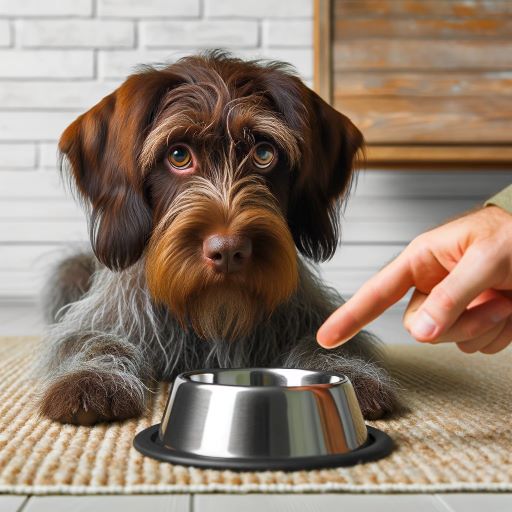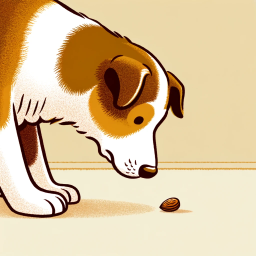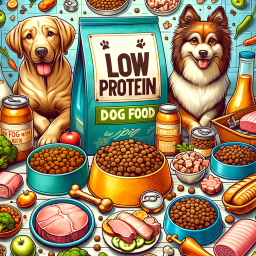Are Rawhide Bones for Dogs Safe? Best 2 Benefits

Are Rawhide Bones for Dogs Safe? To know it read the full article.
The answer is yes. The Rawhide bones are safe for dogs. Because they have several health benefits for your puppy. But you have to ensure the safety of Rawhide bones.
They are a staple in many dog-owning households, have been both lauded and scrutinized in the world of pet care. These long-lasting chews promise to keep our canine companions occupied, but there’s more to these popular items than meets the eye. In this article, we’ll delve into the benefits and potential risks associated with rawhide bones and explore some alternatives.
What Are Rawhide Bones?
Rawhide bones are made from the inner layer of cow or horse hides. The hides are cleaned, cut, and shaped into various forms, such as bones, rolls, or chips. Often, they are flavored to increase appeal to dogs. Praised for their durability, they are a go-to solution for pet owners looking to keep their dogs busy and their teeth clean.
Are Rawhide Bones for Dogs Safe?

The Benefits to Dental Health
Rawhide bones are often recommended for dogs due to their potential benefits for dental health. Chewing on rawhide can have several positive effects:
- Plaque and Tartar Control: The mechanical action of chewing rawhide helps in removing plaque from a dog’s teeth. Plaque is a sticky deposit on teeth in which bacteria proliferate, and if not removed, it can harden into tartar. Tartar can lead to gum disease and tooth decay. The rough texture of rawhide acts like a natural toothbrush, scraping off plaque.
- Healthier Gums: Regular chewing of rawhide can also stimulate the gums, promoting better oral health. Healthy gums are essential for maintaining strong teeth and preventing diseases like gingivitis, which can lead to more severe dental issues if left untreated.
- Reduction in Bad Breath: By helping to remove plaque and tartar, rawhide chews can contribute to fresher breath in dogs. Accumulation of bacteria in the mouth often causes bad breath, and the cleaning action of chewing rawhide can help mitigate this.
- Preventative Dental Care: Consistent use of rawhide bones for chewing can be a preventive measure against dental problems. By keeping the teeth cleaner, it reduces the likelihood of requiring professional dental cleanings, which can be stressful and expensive.
- Strengthens Jaw Muscles: The act of chewing is a good exercise for a dog’s jaw muscles, keeping them strong and healthy. This is particularly beneficial for puppies and young dogs, as it aids in the development of strong jaws.
The Benefits to mental stimulation
Rawhide for dogs offer significant benefits for mental stimulation in dogs, contributing to their overall mental health and well-being. Here’s how:
- Natural Chewing Instinct: Chewing is a natural behavior for dogs. It’s a way for them to explore the world around them and engage in an activity that is instinctively satisfying. Rawhide bones tap into this natural urge, providing a safe and appropriate outlet for their chewing instincts.
- Stress Relief: Chewing on rawhide can be a stress-relieving activity for many dogs. It helps them to relax and can be a way to cope with anxiety or boredom. This can be particularly beneficial in situations that might otherwise cause stress, such as when they are left alone for a period of time.
- Cognitive Engagement: Working on a rawhide bone is a mentally engaging activity. Dogs must figure out how to hold the bone and chew it effectively, which can keep their brains active and engaged. This cognitive exercise is important for maintaining mental sharpness, especially in older dogs.
- Prevention of Destructive Behavior: When dogs are not given appropriate ways to fulfill their chewing needs, they may turn to destructive behaviors, like chewing on furniture or shoes. Rawhide bones can redirect this natural chewing behavior towards a more appropriate and satisfying object, thus preventing undesirable habits.
- Boredom Reduction: Dogs, especially active breeds, can easily become bored if not provided with enough stimulation. Rawhide bones can provide long-lasting entertainment, keeping dogs occupied and mentally stimulated.
- Sensory Stimulation: The texture and taste of rawhide can offer sensory stimulation, keeping the dog’s interest over extended periods. This sensory engagement is an important part of mental stimulation.
Considerations for Using Rawhide Bones
While rawhide for dogs offer these mental stimulation benefits, it’s important to use them responsibly:
- Supervise Chewing: Always monitor your dog while they’re chewing a rawhide bone to ensure they don’t choke on any pieces.
- Quality Matters: Choose high-quality rawhide products to avoid those treated with harmful chemicals.
- Know Your Dog: Some dogs might not be suited for rawhide bones, such as those with sensitive stomachs or aggressive chewers who might break off and swallow large pieces.
Alternatives for Mental Stimulation
If rawhide isn’t suitable for your dog, there are numerous other ways to provide mental stimulation:
- Puzzle Toys: Toys that require dogs to solve puzzles to get treats.
- Interactive Play: Games like fetch or tug-of-war.
- Training Sessions: Regular training sessions can mentally stimulate and strengthen the bond between you and your dog.
Rawhide Bone as Cost-Effective
Purchasing rawhide bones in bulk can be a practical and cost-effective option for many dog owners, especially those with multiple pets or dogs who are frequent chewers. Rawhide bones are often considered a cost-effective option for pet owners, offering several financial benefits:
- Longevity and Durability: Rawhide bones are known for their durability, meaning they can last a long time even with regular chewing. This longevity makes them a more cost-effective choice compared to other chew toys or treats that may be quickly destroyed or consumed. For pet owners, this means fewer replacements and less frequent purchases.
- Dental Health Maintenance: Regular chewing of rawhide bones can contribute to better dental health in dogs, potentially reducing the need for professional dental cleanings or treatments, which can be quite expensive. By helping to control plaque and tartar buildup, rawhide bones can serve as a preventative measure against dental issues, saving money on veterinary bills in the long run.
- Reduced Need for Other Toys: Since rawhide bones provide both entertainment and a chewing outlet for dogs, they can reduce the need to purchase multiple types of toys. This can be particularly beneficial for owners of dogs who are heavy chewers and might otherwise go through toys quickly.
- Variety and Affordability: Rawhide bones come in a variety of sizes and shapes, catering to different dog sizes and preferences. This variety often comes with a wide range of price points, making it easier for pet owners to find options that fit their budget.
- Mental Health Benefits: The mental stimulation provided by rawhide bones can help in preventing behavioral issues that might otherwise lead to expenses. For example, a dog that is mentally engaged with a rawhide bone is less likely to engage in destructive behaviors that could result in property damage or the need for additional training.
- Availability and Accessibility: Rawhide bones are widely available in pet stores, supermarkets, and online, often at competitive prices. This easy accessibility makes it a convenient and economical choice for many dog owners.
Considerations for Cost-Effectiveness
While rawhide bones can be cost-effective, it’s important to consider the following:
- Quality Over Price: Cheaper rawhide products might be treated with harmful chemicals or be of lower quality, potentially leading to health issues. Investing in higher-quality rawhide might be slightly more expensive initially but can be safer for your dog in the long run.
- Moderation and Supervision: To maintain their cost-effectiveness, rawhide bones should be used in moderation and always under supervision to prevent any potential health risks, such as choking or digestive blockages.
The Risks
However, it’s essential to be aware of the risks associated with rawhide bones.
Choking and Blockages
Chunks of rawhide can be swallowed, leading to choking or intestinal blockages. This is particularly dangerous and can be life-threatening, requiring immediate veterinary attention.
Digestive Issues
Not all dogs digest rawhide well. It can cause stomach upset, diarrhea, or even more severe digestive issues.
Contamination
There have been instances where rawhide products were recalled due to contamination with chemicals or bacteria like Salmonella.
Choosing Safe Rawhide
If you choose to give your dog rawhide, there are ways to minimize risks:
- Supervision: Always supervise your dog while they’re chewing rawhide.
- Size and Type: Select the appropriate size and type for your dog’s size and chewing habits.
- Quality: Opt for high-quality, preferably untreated rawhide, and consider products made in countries with stringent safety standards.
Alternatives to Rawhide
Given the risks, many pet owners seek safer alternatives. Here are a few:
- Rubber Chew Toys: Durable and safe, they can often be filled with treats to keep your dog engaged.
- Dental Chews and Treats: Specifically designed to promote oral health, these are often safer than rawhide.
- Natural Chews: Items like bully sticks, deer antlers, or fish skins can be good alternatives, though they also come with their own set of considerations.
- DIY Chews: Homemade chews can be made from safe, natural ingredients, giving you control over what your dog is consuming.
FAQ
Do vets recommend rawhide for dogs?
The answer is yes. Veterinarians recommend rawhide for dogs. Because it improves the dental health of of your puppy.
Is it OK for dogs to chew on rawhide bones?
Of course, it is ok for dogs to chew on Rawhide bones. Because these bones have different health benefits such as dental health.
What are the safest bones for dogs?
Yak chews and elk antler chews are the safest bones for dogs.
What is a good alternative to rawhide bones for dogs?
Rubber Chew Toys is a good alternative to rawhide bones for dogs.
Conclusion
Rawhide bones can be a beneficial chew for dogs, but it’s crucial to weigh the benefits against potential risks.
By choosing wisely and considering safer alternatives, pet owners can ensure their furry friends enjoy their chew time without compromising their health and well-being.
Remember, when in doubt, consulting with your veterinarian is always the best course of action. I hope you have understood Are Rawhide Bones for Dogs Safe? or not.
Related Posts:
Read More: How to Train Dog to Poop in Designated Areas? Best 3 Methods
Read More: Why Are My Dogs Balls Black? Best Number 1 Answer
Read More: How often to brush dog teeth? Best Advice
Read More: Why Do Dogs Like Peanut Butter?
Read More: Can Dogs Get Sick From Eating Cat Poop? 3 Methods To Stop





